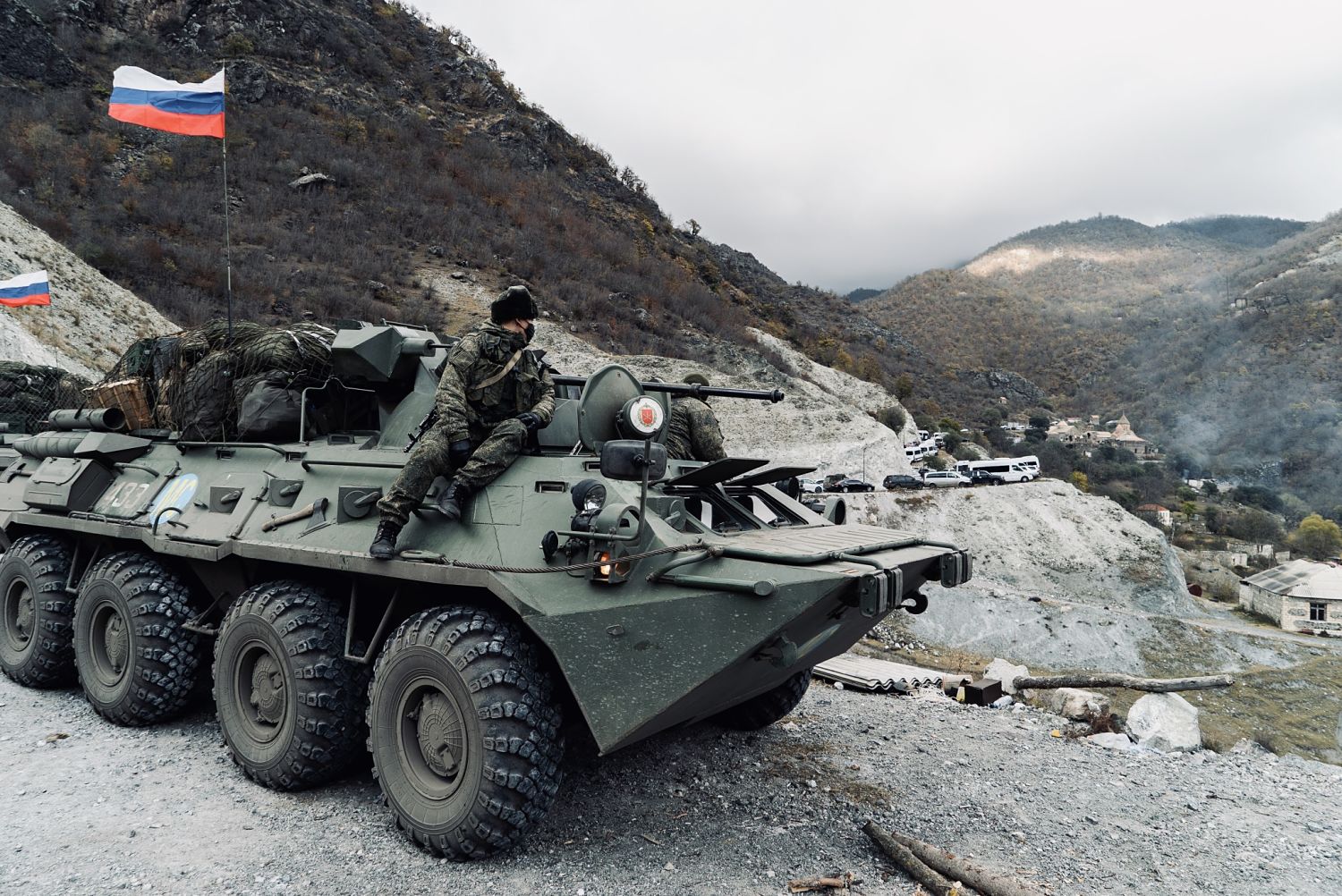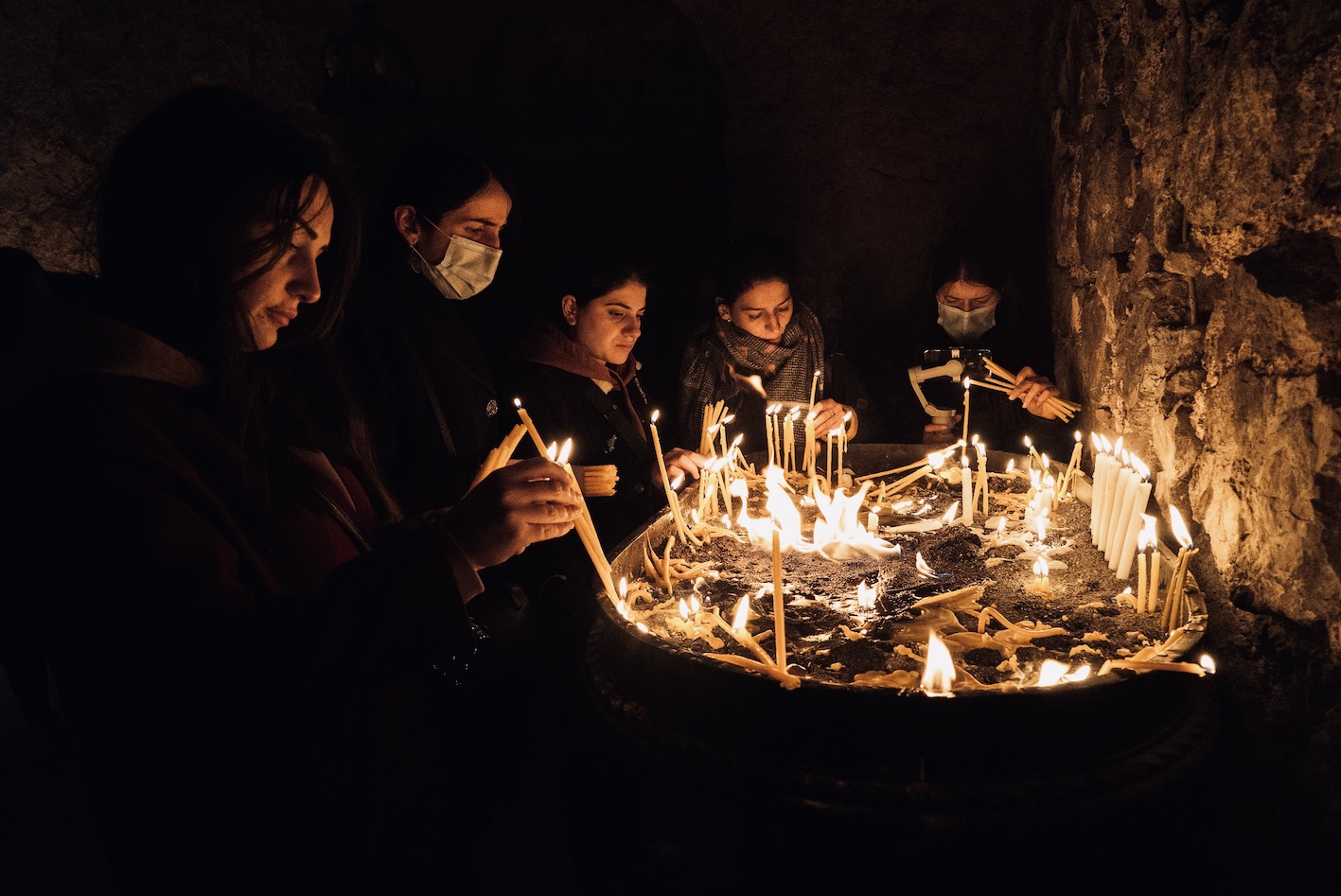News
Where the dust never settles
The six-week war between Armenia and Azerbaijan over Nagorno-Karabakh has ended, but the grievances are far from over
“Nobody wants to be spotted from the air,” blurted our Yerevan driver on his longest run in weeks. The feared drones relied on thermal sensors so they needed no proper “eyes” to see us. It didn’t matter: he would drive us all the way down to Stepanakert -the capital of Nagorno Karabakh- constantly jamming on the brakes. Our first hours in the besieged enclave worked as a comprehensive introduction to what we were about to witness in the following days: an uneven battle between a Soviet-era army and a hi-tech Blitzkrieg waged by Azerbaijan with Turkish support.
On the morning of 27 September, Baku launched a major offensive against Nagorno-Karabakh, an unrecognised breakaway region that is officially part of Azerbaijan but is run by its Armenian majority. The conflict in Artsakh —the name used by Karabakh Armenians for the enclave— dates back to the middle of the Gorbachev era in 1988, and it’s the longest-running unresolved dispute in the former Soviet Union. Over half a million Azeri civilians were pushed out of the region in a war that ended in a cease-fire in 1994. Since then, ethnic Armenians had been governing their own affairs with the backing of Yerevan. Over the last three decades, the conflict between Armenia and Azerbaijan has resulted in a practically complete ethnic separation of the population. Hundreds of thousands of people from both sides have become refugees.
Four weeks into the 2020 Azeri offensive, Stepanakert was almost deserted, its residents hardly surfacing from the basements where they’d sheltered from constant shelling. With men of fighting age in the frontlines and women and children in Armenia, the elderly made up most of those remaining in the capital. 82 year-old Rosa Sarkissian had been rescued from the rubble of her house in the early morning hours of October 5:
“I was sleeping right there, in the corner room,” recalled Sarkissian, pointing with her cane at her derelict house as she walked across the debris with two pairs of men’s slippers and three pyjamas under a coat. “It was miracle that I’m still alive,” she repeated three times.
A joint effort
Azerbaijan’s defence ministry released daily footage of Armenian forces being destroyed by high-precision air strikes. But on the ground one could also come across destroyed schools, shopping centres and stores, as well as Stepanakert’s central market. The fiercest battle, though, was fought in Shushi —Shusha for the Azeris. The majority in Shushi were Azeri until the 90’s, then Armenians fleeing Azerbaijan changed the city’s make up. Located on a hill from which it overlooks Stepanakert, Shushi is also a perfect spot to bomb the capital and to cut the Lachin corridor, a vital escape and supply route. The destruction of the historic church of Ghazanchetsots on October 7 seemingly paved the way for a string of attacks with conventional artillery, air strikes and even kamikaze drones against both military and civilian infrastructures.
“We are doing all we can, but I’m afraid that’s not much,” acknowledged a soldier who was carrying a sleeping bag and a Russian bazooka on his back while his unit was being redeployed. Karabakh’s second city was being turned into a mountain of rubble and the only options to survive lied underground. From a basement where the men of the neighbourhood spent their days, Stepan, a veteran of the previous war complained about the ongoing one.
“How could I possibly face such an enemy with this kalashnikov?" said the 53-year-old Armenian, holding the same rifle he’d used in the 1990s fighting and again during clashes in April 2016 —also known as the Four-Day War.
“It was easier back then, we could see the enemy and even look him in the eye. We knew who they were,” added Stepan, himself one of the Armenians who arrived in Karabakh from Azerbaijan fleeing a notorious 1988 pogrom in Sumgayit. Experts claim that was the event which ignited the spiral of violence that has lasted to today.
Despite the imbalance of military power, volunteers kept flocking to Karabakh from Armenia as well as from the diaspora. Ruben Hovhannisiyan, a well-known theatre director from Yerevan, was in charge of organising the flow of diaspora volunteer soldiers to the frontlines. “I’m doing exactly the same thing I did in the 90s. I’ve been here since October 3 and I’ve already brought more than two hundred volunteers,” said Hovhannisiyan, in his 60’s with a distinguished white beard.
But even the two hundred fighters, mostly from Syria and Lebanon, looked humble compared to the two thousand mostly Arab mercenaries the Azeris had reportedly brought in, and the volunteers would soon face at the front. Before the war, he’d been among the organisers of the Pan Armenian games, an international event held to reunite Armenians scattered around the world. The last meeting had taken place in the Stepanakert stadium during the summer of 2019. The same organisational methods and supply lines Hovhannisiyan had used to send young Armenians to Stepanakert to compete in sports would be used to send them to the front.
Many other volunteers found their way in by themselves. Benjamin, a 62-year old cook who had spent half of his life living in California booked a flight to Armenia as soon as he heard of the offensive. “It took me two weeks to tell my mother I was here,” he admitted, visibly moved, from the kitchen where he prepared meals for Stepanakert’s main hospital. He also relied on food supplies coming in from Armenia —mostly through the Lachin corridor— which would be delivered from Stepanakert’s town hall: from fruit and vegetables to soap and hydro-alcoholic gel. Residents queued in line patiently while Soren Tarmazian, the council’s supply chief assured there was enough food stored in several warehouses across Stepanakert. “We’ll be fine even if Lachin gets eventually cut,” said the official.
That happened on November 4.
From beliefs to facts
The war raged between truces which only lasted a few hours, or not even that. Baku and Yerevan would accuse each other of hitting civilian targets and using prohibited weapons, such as cluster bombs. International organisations like Human Rights Watch supported both rivals’ complaints.
In a downtown basement, Artak Beglaryan, the ombudsman of Nagorno-Karabakh, seemed overwhelmed by the drama: “It’s an asymmetric war which is opening the door to a humanitarian catastrophe,” said the 32-year-old, who lost his sight to a landmine at the age of six. “They’re clearly targeting civilians by destroying schools, hospitals, churches… We’re talking about an endless list of war crimes.”
From another undisclosed location in Stepanakert, Suren Sarumyan, a spokesman for the Ministry of Defence, paraphrased press releases that were broadcasted daily, but which often had little to do with the situation on the ground. The troop morale was “high” and they are “in full control of the tactical situation.” Regarding the cut of Lachin road, it was due to “a clean-up operation against Azeri units, and soon to be reopened.”
Those distorted press releases convinced many that a rumoured shipment of Russian weapons would eventually help turn things around, and kept the flame of hope alive until the very end. That was also the reason why the call for the evacuation of Stepanakert —on November 7— would catch many by surprise. Many in Armenia refused to believe it until Nikol Pashinyan, the Armenian Prime Minister, announced via Facebook that he had signed a peace agreement with Moscow and Baku two days later. The move came literally out of the blue for many and it led to an outburst of rage. An angry mob broke into both the Armenian Government and Parliament on the same night and protests would take the streets of Yerevan in the forthcoming days, calling on the prime minister to go.
“Betrayal”
The controversial peace agreement consisted of nine points which included a ceasefire and an exchange of prisoners as well as the progressive return to Baku of the seven adjoining districts occupied by the Armenians after the 1990’s war, including the city of Shushi. The process would be monitored by Russian peacekeepers on the ground.
 Russian troops deployed in Kelbajar, a few days before the agreement was signed. Photo: Karlos Zurutuza
Russian troops deployed in Kelbajar, a few days before the agreement was signed. Photo: Karlos ZurutuzaAccording to Neil Hauer, a Canadian analyst and expert on the Caucasus based in Tbilisi (Georgia), the agreement is far from definitive.
“It’s stable and it also prevents any outbreak of full-scale fighting but it certainly doesn’t address the final status of Karabakh. Will there be a referendum? Will it remain part of Azerbaijan? We don’t know and, in this sense, we are back to square one,” claims the analyst.
After the agreement was announced, many distraught residents preparing to evacuate set their houses ablaze to make them unusable to Azerbaijanis who would move in. Infrastructure such as power plants or petrol stations were also dismantled, and so were many hotels, restaurants and other businesses that had catered until recently to tourists. The imminent renewal of Azerbaijani control also raised concerns about the fate of several Armenian cultural and religious sites, such as Dadivank, an Armenian Apostolic Church monastery that dates back to the ninth century. Despite the growing uncertainty, Stepanakert has seen many former residents return to their houses. But footage of Azerbaijani soldiers looting abandoned residences or desecrating Armenian graveyards are far from reassuring for dozens of thousands of displaced still waiting in Armenia.
 Last offering in the Dadivank monastery before relinquishing control. / Photo: Karlos Zurutuza
Last offering in the Dadivank monastery before relinquishing control. / Photo: Karlos Zurutuza“I didn’t leave back in 1992 or in April 2016, but this last time we all realised it was something quite different,” says Lana, a former Armenian language teacher at the Artsakh State University who preferred not to give her full name. Today, the 40-year old languishes alongside several other displaced families in the student dorms at the Yerevan campus of the Eurasian University of Armenia. “I guess we all wanted to believe in our own propaganda,” she adds with a bitter smile. Transferring Shushi back to the Azerbaijanis was “nothing but sheer betrayal,” she said, before admitting that she expects a long wait to return.
“I know some are going back, but I won’t take any step until I have full guarantees.”
